Nikola Tesla's Self-Exciting Dynamos and Alternators
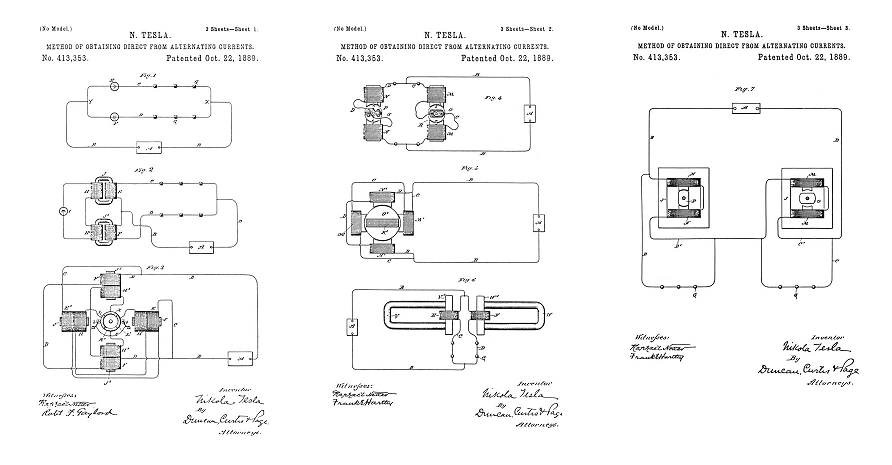
Rectification, Energy Conversion
413,353
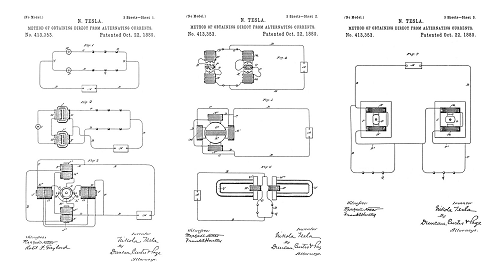
Method of Obtaining Direct from Alternating Currents - June 12, 1889
In the first Tesla motor/generator patents, the generators are shown with permanent magnets in the field. Permanent magnets are very expensive, and they are not permanent, they weaken over time when used in generator field applications. In practice, generator fields use electro-magnets which are much cheaper to construct and do not weaken with use; but these electromagnets require a power source.
When Tesla applied his "egg" geometry as a generator in patent, he shows a separate generator, labeled the "exciter", and it has permanent magnets. This "exciter" is providing the electrical power to create the generator magnetic field. This technique is applied to produce higher generator efficiencies, higher line frequency without increasing the shaft speed, and when isochronous currents are applied, frequency stability.
But for simple power generation, a DC current to energize the generator field magnets is all that is required. In DC generator heads, power for the field magnets is taken right from the commutator brushes, but in an alternating current generator there are slip-rings producing sine wave alternating currents. In Tesla patent 413,353, he shows circuits and techniques he uses to produce a DC current from the alternating current output of a generator, and this is applied to the generator field magnets.
But when you are starting with just iron, copper, line-shaft rotation, and no magnets... There is no electricity. When you first spin up the armature of a self-excited generator, there is no current produced, because there is no magnetic field anywhere. In order to begin generating electric current, a pulse of starting current, typically from a battery, is applied to the generator output circuit. This pulse of electric current produces a magnetic pulse in the generator field, and this starts current flowing in the generator field electromagnets, which then engage the rotating armature inductively and power generation commences.
Self-excitation is not free energy. The machine consumes more shaft energy, it gets harder to turn, when they are self-excited. The extra energy required exactly matches the energy consumed by the self-excited field magnets, and this is not always the most efficient way to operate a machine.
406,968
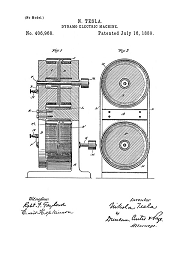
Dynamo-Electric Machine - March 23, 1889
406,968 is a self-excited DC dynamo or generator. As shown in patent the conductive discs are both turned at very high speeds (the small diameter pulleys) from a line-shaft. The field coils in the core are shown closed. Once the discs and conductive belt are spinning, a battery is applied across the spring clip terminals to energize or "flash" the closed field coils with a magnetic pulse. Typically a spark jumps, and then current begins to flow from the output terminals. Once current begins to flow, part of the rotational force from the line-shaft is expended in producing a circulating current in the closed field magnet winding, which maintains the magnetism required to produce the current from the output terminal.
Additional discussion on this particular machine is located Here & Here.
447,920
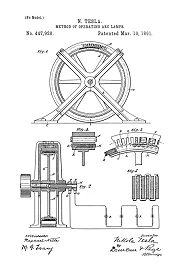
Method of Operating Arc Lamps - Oct 1, 1890
447,920 is shown self-excited in patent. A spark or a "flash" of energy is required across the output terminals to start a current flow circulating in the closed field coil. Then part of the rotational energy from the belt drive was consumed in energizing the field magnets.
In the laboratory, and in lecture demonstrations, all of these generators had holes drilled into the castings for the field magnet lead wires, or, hollow shafts, with the field magnet leads brought out to slip rings. On stationary field machines, field magnet terminals are always seen in photos mounted on the frame with terminal posts for making multiple connections. In lecture demonstrations of 447,920, - 110 volts DC was available in the lecture halls, this was a standard lighting utility at this time in large institutions, and Tesla used it to energize the field magnets. For the same amount of energy consumed from the belt drive, the output of the machine was much greater when using an external power source to provide the field magnet energy. In laboratory applications in wireless, isochronous generators were applied to the field windings of synchronous motors which were then used to turn the high-frequency generators, in order to lock the output frequency of the generator.
Related Patent
390,414
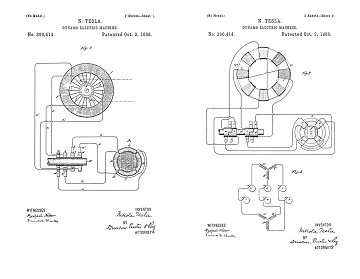
Dynamo-Electric Machine - April 23, 1888
To the Archive Page Discussion on Tesla's Wireless
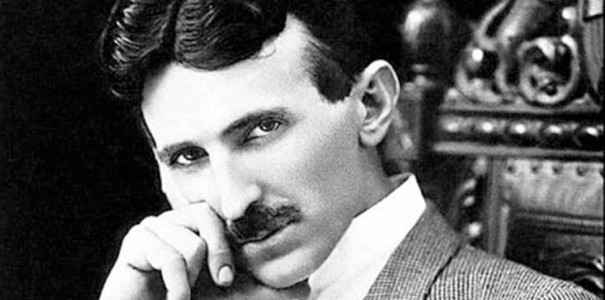
Lab-Tesla disclosures on the technology just presented
THE TESLA EFFECTS WITH HIGH FREQUENCY AND HIGH POTENTIAL CURRENTS
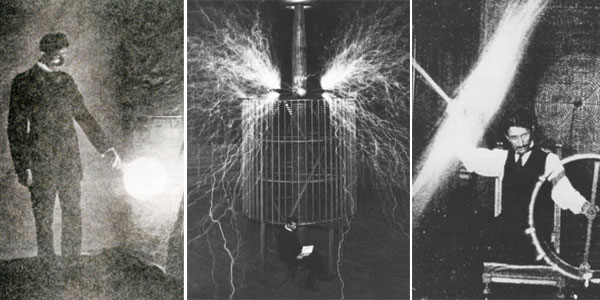
Chapter XXV - The Martin Book
EXPERIMENTS WITH ALTERNATE CURRENTS OF VERY HIGH FREQUENCY AND THEIR APPLICATION TO METHODS OF ARTIFICIAL ILLUMINATION
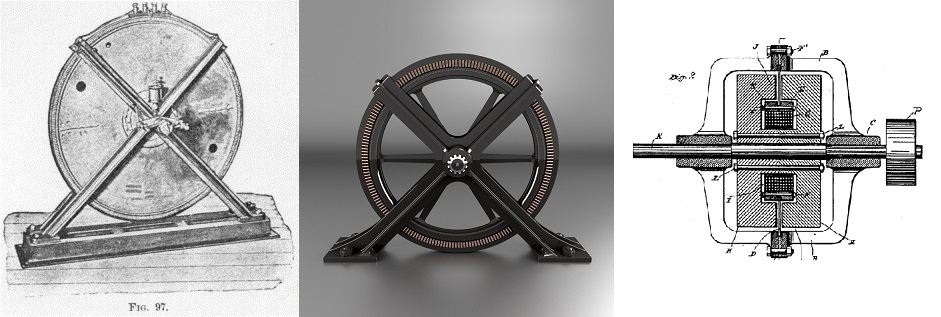
Lecture by N. Tesla before the American Institute of Electrical Engineers at Columbia College, N.Y., May 20, 1891
Mr. Tesla's Personal Exhibit at the World's Fair
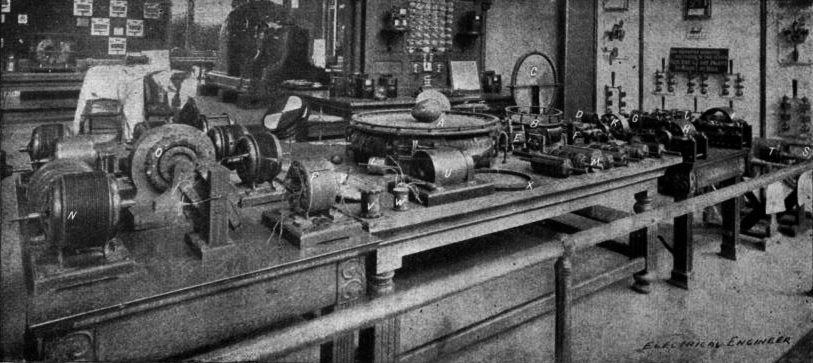
Chapter XLII - The Martin Book
Tesla's Laboratory Power

